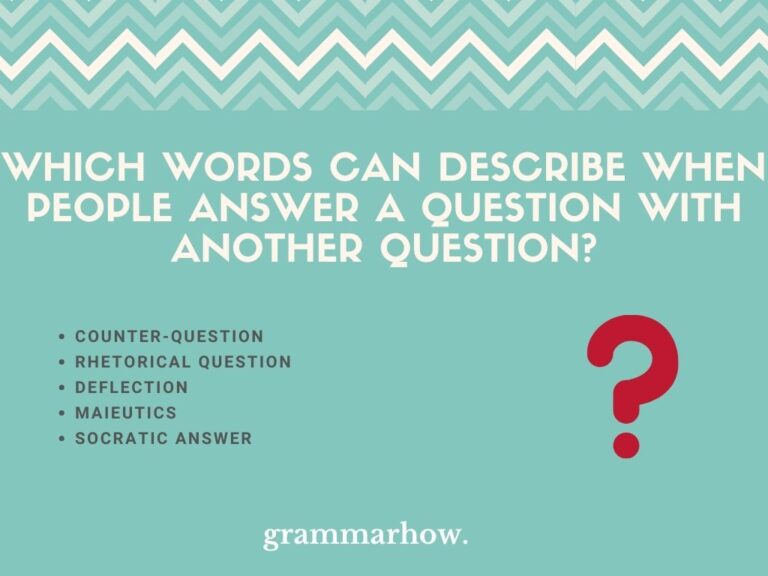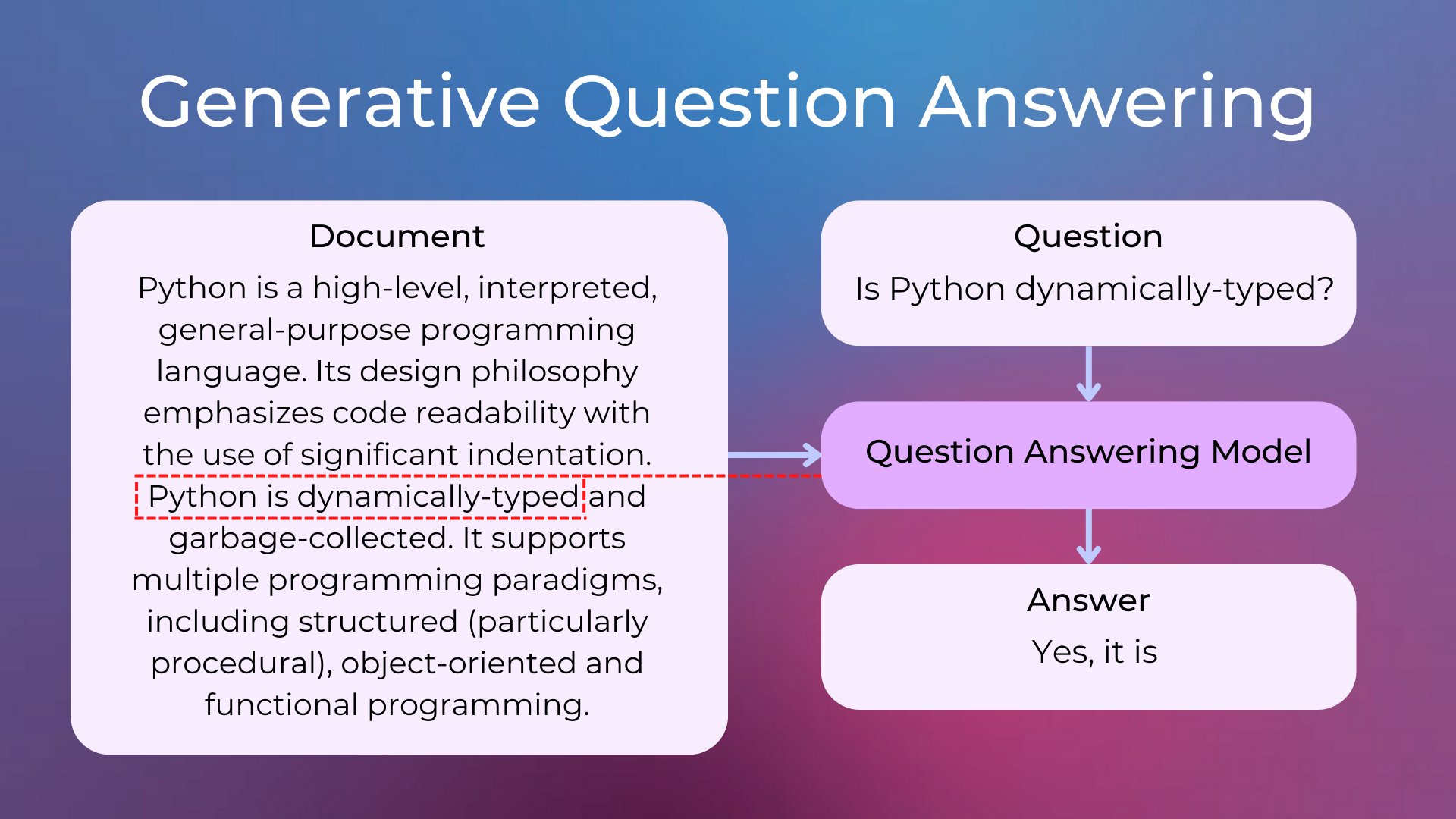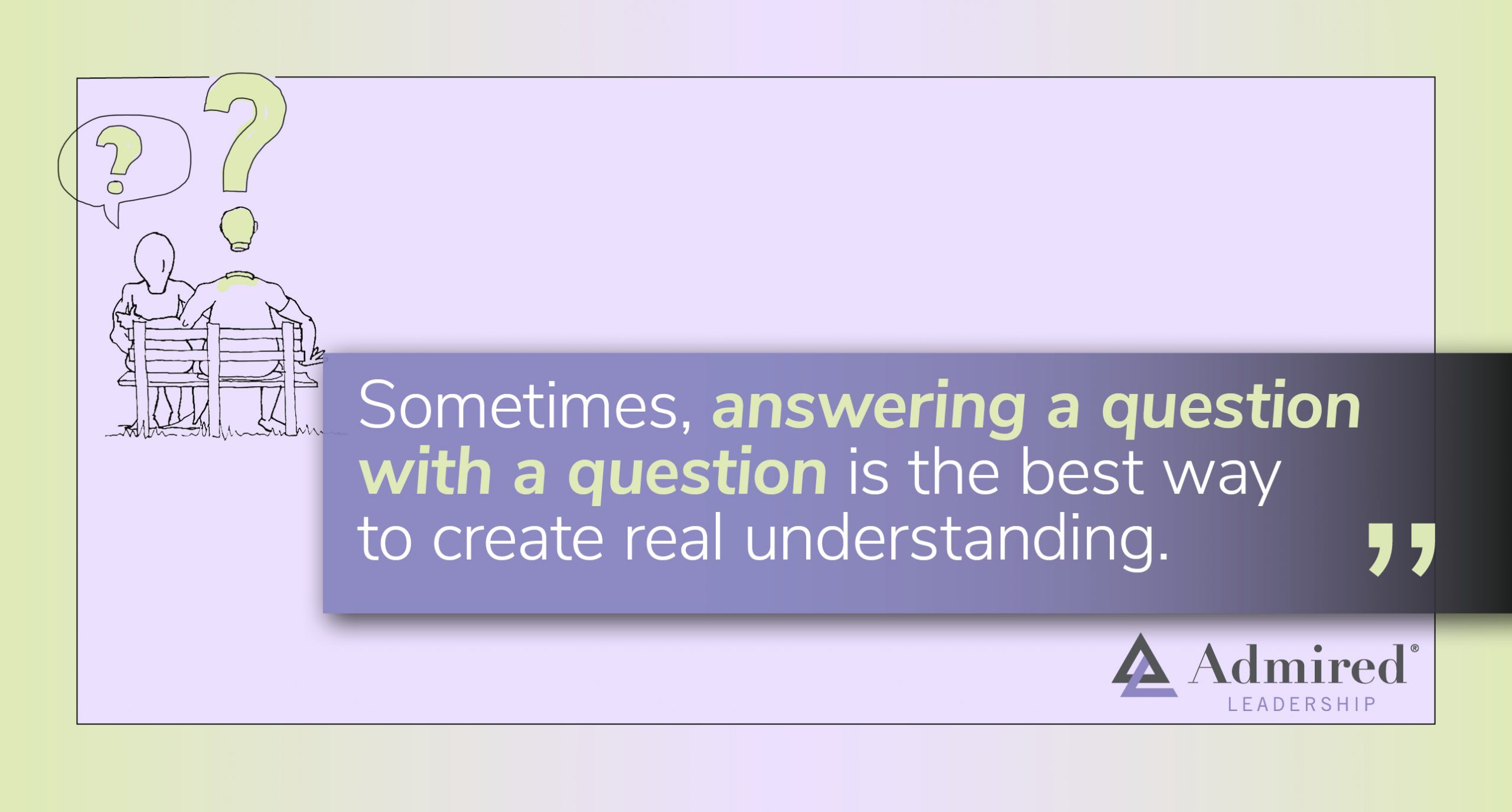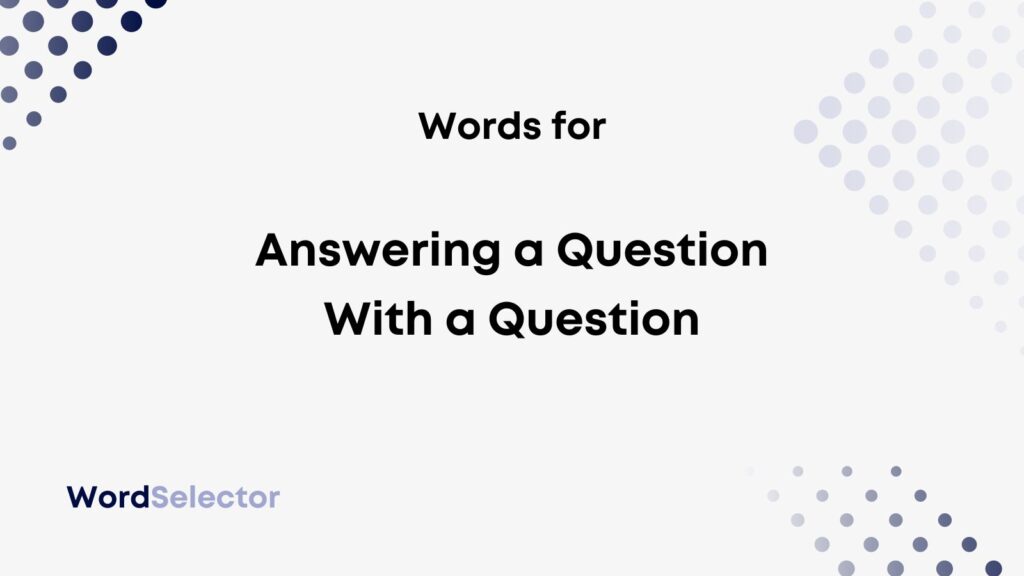Is Answering A Question With A Question Manipulative

In conversations ranging from casual chats to high-stakes negotiations, the tactic of answering a question with a question is a familiar one. But is this seemingly innocuous response simply a conversational gambit, or does it cross the line into manipulation? The debate surrounding this communication style is complex, touching on issues of power dynamics, evasion, and genuine inquiry.
At its core, the question boils down to intent. Is the questioner seeking clarification, redirecting the conversation, or attempting to subtly control the narrative? Understanding the motivations behind this conversational strategy is key to discerning whether it’s a legitimate tool or a manipulative tactic.
Decoding the Intent
The use of a question in response to a question isn't inherently negative. Often, it serves a legitimate purpose. For example, it can be used to clarify the original question. Asking, "What exactly do you mean by 'successful'?" allows the respondent to better understand the questioner's perspective and provide a more relevant answer.
This clarification approach is often seen in therapeutic settings. Therapists may employ it to encourage self-reflection. In Cognitive Behavioral Therapy (CBT), for instance, a therapist might respond to a patient's statement with a question designed to challenge their thought processes. This encourages them to examine the basis of their beliefs, rather than simply accepting them as facts.
However, the same tactic can be employed to evade a direct answer. Political figures, for example, are often accused of using this strategy to avoid committing to a specific position. They may deflect by asking a related, but ultimately different, question.
The Power Dynamic
The perceived manipulation often hinges on the power dynamic between the individuals involved. A question from someone in a position of authority might feel more like an interrogation than a genuine attempt to understand. Conversely, a question from someone in a subordinate position might be seen as a deferential way to seek guidance.
Dr. Emily Carter, a professor of communication studies at the University of California, Berkeley, explains, "The context is paramount. A boss asking, 'Have you considered the budget implications?' when questioned about a project's feasibility is different from a junior employee using the same tactic."
Examples and Interpretations
Consider the following scenario: A child asks their parent, "Can I have a cookie?" and the parent responds, "Do you think you've finished your dinner?" Is this manipulative? On one hand, it subtly redirects the focus to the child's responsibility. On the other, it's a simple way to reinforce rules and encourage healthy eating habits.
In a professional setting, a colleague might ask, "Did you finish that report?" and receive the response, "Did you send me the data I needed?" This could be interpreted as a legitimate dependency issue, or a passive-aggressive way of shifting blame.
The ambiguity often lies in the unspoken intentions. If the respondent is genuinely seeking information necessary to answer the original question, it's likely not manipulative. If, however, the goal is to control the conversation, evade responsibility, or subtly undermine the questioner, it takes on a more manipulative character.
Ethical Considerations
From an ethical standpoint, transparency and honesty are crucial. If the reason for responding with a question is to genuinely clarify or seek information, it's generally considered acceptable communication. However, if the intent is deceptive or manipulative, it violates principles of open and honest communication.
Organizations like the American Psychological Association (APA) emphasize the importance of ethical communication in professional settings. Their guidelines stress the need for honesty, fairness, and respect in all interactions. Answering a question with a question that is intended to mislead could be seen as a violation of these principles.
Navigating the Conversation
So, how can individuals navigate situations where they suspect this tactic is being used manipulatively? The key is to recognize the pattern and directly address it. One approach is to rephrase the original question and insist on a direct answer.
Another tactic is to call attention to the respondent's strategy. "I notice you're answering my question with a question. Could you please answer my original inquiry?" This approach can put the respondent on the spot and force them to be more direct.
Ultimately, the decision of whether answering a question with a question is manipulative depends on the specific context and the intent of the individual using the tactic. By understanding the nuances of communication and recognizing potential warning signs, individuals can protect themselves from manipulation and promote more open and honest dialogue.


















